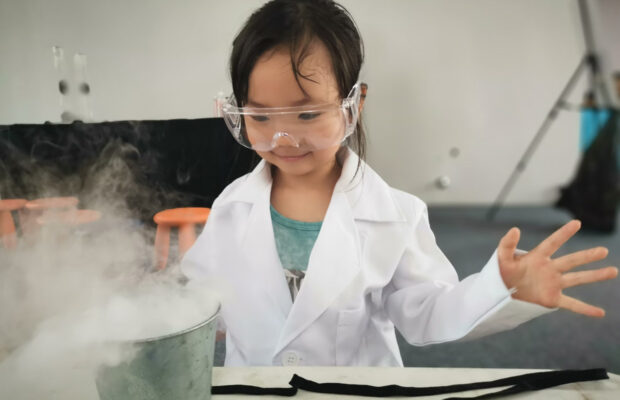8 Fun Science Experiments For Kids

Science experiments are an excellent way to understand the world around us, and they’re also a fun way to spend some quality time with your kids. If your little ones have curious minds, you can feed their interest in understanding how things work with a variety of simple science experiments.
In today’s tech-savvy world, many parents are searching for ways to keep their kids interested in the outdoors. With gaming consoles taking up so much time, you can also consider innovative tech toys that encourage time outside, like drones, hoverboards, night vision tech, and others.
And when it comes to fun science experiments, we’ve listed some practical activities for you to try with your kids.
Electricity Experiments
There are a ton of fun and safe electricity experiments for kids. Some dabble with static electricity using balloons, while others draw power from potatoes.
Even so, the most intriguing experiment is building a circuit. If you aren’t too certain how to go about building a circuit, it’s best to purchase a kit that will guide you through easy-to-understand instructions.
The Self-Inflating Balloon
The self-inflating balloon experiment puts a fun twist on the vinegar and baking soda experiment. With this experiment, you’ll need to put some baking soda in a bottle and some vinegar inside a balloon. Carefully place the balloon over the bottle and watch it inflate by itself.
The vinegar will pour into the bottle from the balloon, and the chemical reaction will cause rising gas. The best part about this experiment is that it’s a lot less messy than the classic volcano experiment that also uses baking soda and vinegar.
Instant Ice Experiment
If your kids love the Disney film Frozen, they’ll love this clever science experiment.
First, you’ll need to chill some water in a bottle until just before it turns to ice. Next, fill a ceramic bowl with ice cubes and flip it upside down. Then let your little ones slowly pour the chilled water onto the bowl. The water will turn to ice as it flows.
The Science Of Mold
Mold is grossly fascinating, and your kids will thoroughly enjoy the intriguing formation of different molds. Moreover, you can also teach your kids how various additives like vinegar and salt will affect the growth of mold.
Let your kids touch three slices of regular bread; one with unwashed hands, one with washed hands, and one with cleaned and sanitized hands. Place each slice of bread into a sealed plastic bag along with the different additives and watch the mold grow over several days.
Lava Lamp
Lava lamps are exceptionally fascinating. Moreover, making your own lava lamp is a lot easier than you might think.
You’ll need a bottle, some antacid tablets, food coloring, and oil. First, fill the bottle with 1 or 2 inches of water, and then add some food coloring. Next, fill up the rest of the bottle with oil and drop an antacid tablet in to watch the lava lamp bubble and come to life.
The Sundial
A sundial is a highly straightforward science experiment that will teach your kids about time in the most practical way.
All you’ll need is a paper plate, a stick, and a marker. Place the stick in the middle of the paper plate, and place the paper plate in a sunny area outside. It’s important not to move the paper plate at all for the duration of the experiment.
Mark the shadow with your marker every hour or so, and your kids will see how the very first clocks worked.
Apple Oxidation
Another excellent science experiment for kids is testing different additives to prevent the oxidation of apples.
Slice an apple up and use different additives for each slice. Saltwater, orange juice, honey water, lemon juice, and sugar water are excellent options. Mark which additive is used for each piece and examine the oxidation after some time.
Walking Water
For this fun science experiment, you’ll need six containers filled halfway with water. Three containers should have colored water, and three should have clear water. For the three colored water containers, use red, yellow, and blue food coloring. Now arrange them in a circle, alternating between colored and clear water containers. Next, make a bridge between each container using a folded paper towel.
The water will “walk” from one container to the next, and your little ones will marvel at how the colors mix as the water is able to walk up and then down each container.










 © 2024
© 2024
0 comments